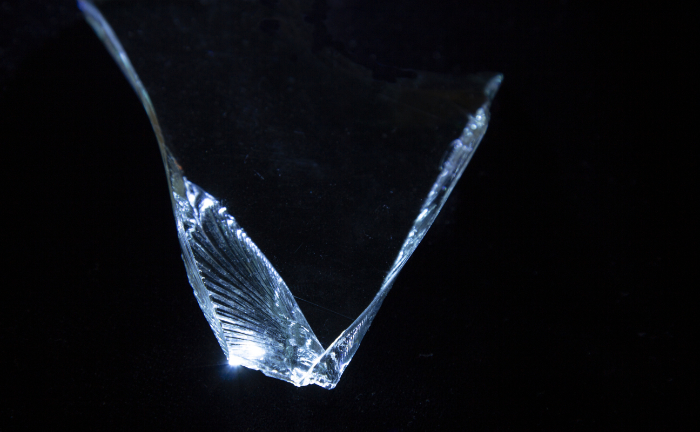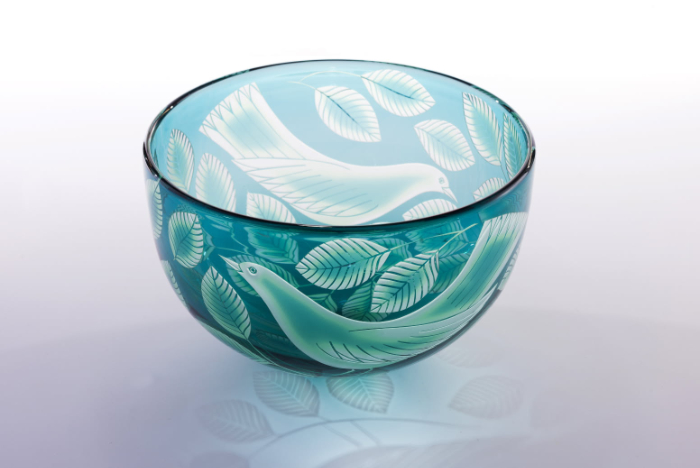
Having a blast
Ruth Dresman loves to celebrate the joy of the natural world in her distinctive artwork. Here she describes her contemporary glass practice, which has evolved from an initial focus on glassblowing to the painstaking process of sandblasting.
I came across hot glass by surprise. I was a student on a Foundation course at Salisbury College when I visited the Scilly Isles and the opportunity arose to see, smell and drop a blob of the stuff.
I had never met any material so beautiful, dangerous, difficult or compelling. I found my direction that weekend and enrolled on the 3-Dimensional Design course at Farnham, Surrey. In the first year it offered a full-time glass course.
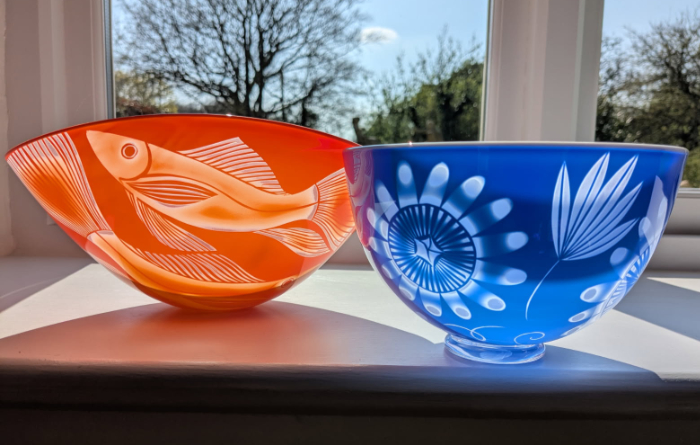
My mother was a sculptor, so I grew up drawing, painting and making things. As a consequence of this, I had developed my drawing skills. It was at Farnham that visiting tutor John Maltby entered the glass department as he was curious about what was happening there. On seeing my sketchbooks he questioned why didn’t I combine the rich figurative imagery from them with my blown glass. Other visiting tutors were Annette Meech and Christopher Williams from The Glasshouse in Covent Garden, London, where I spent two years as the studio assistant after graduating. (Incidentally, the post in those days was called ‘boy’).
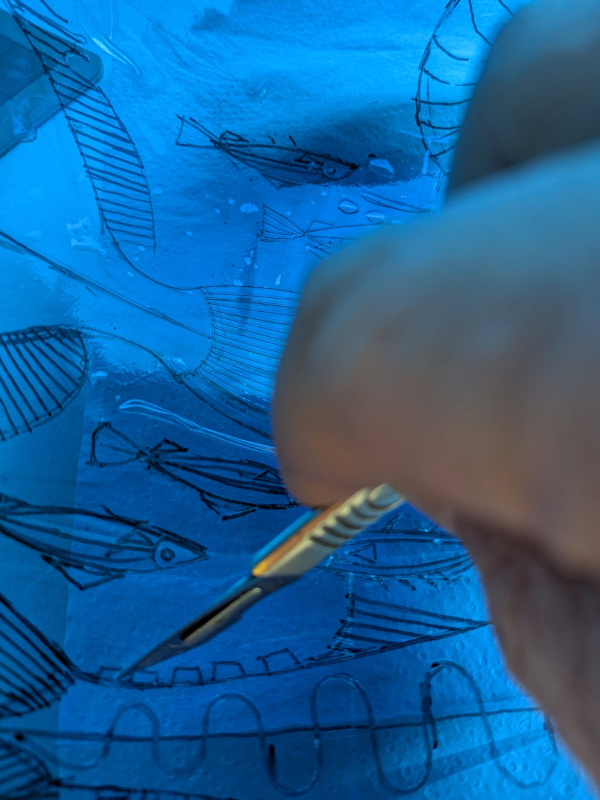
So, I spent five years working full time with hot glass, but I realised that, because of the lengthy decoration process involved in my work, I would only require intermittent time in front of the furnace. I’d been developing skills at the sandblaster, weaving my imagery in and around 3D forms.
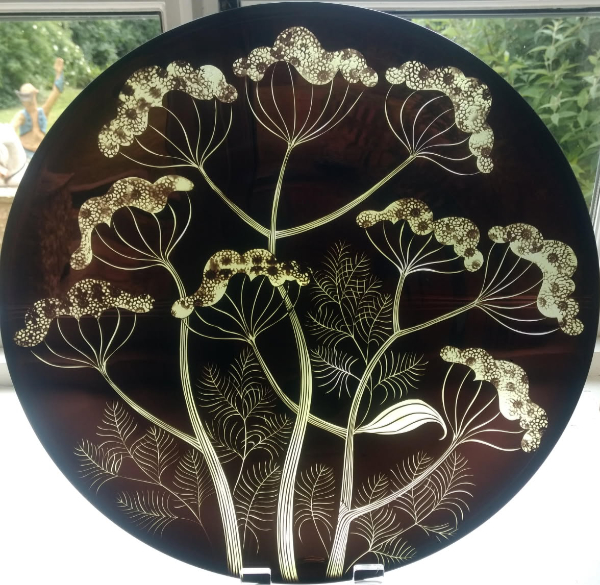 I began experimenting with Graal – something I still do. It gives the glass the opportunity to ‘speak again’ by softening and distorting my crisp images into more fluid and gentle shapes.
I began experimenting with Graal – something I still do. It gives the glass the opportunity to ‘speak again’ by softening and distorting my crisp images into more fluid and gentle shapes.
These days, I hire furnace time for glass blowing. I direct the blowing and make up part of the team with the exceptionally skilled Neil Wilkin, based in Wales, or Sonja Klingler, based in Somerset, with whom I have a rewarding, long-term working relationship. In contrast, the sandblasting is done very quietly and painstakingly in my modest workshop at home.
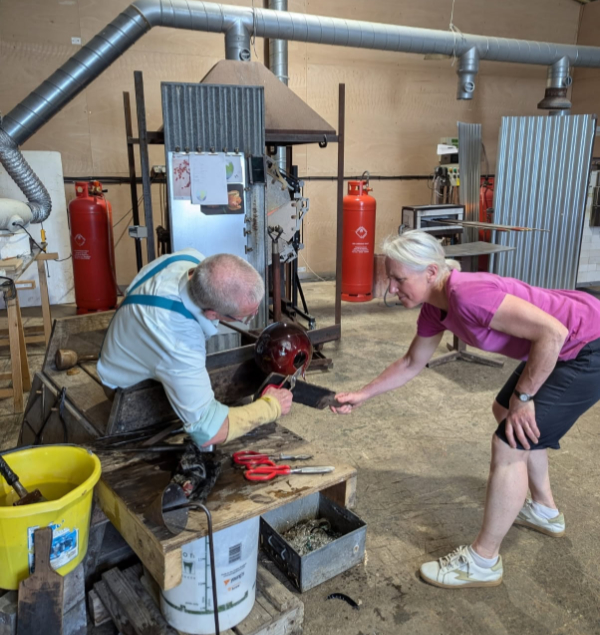
Glass gives me the opportunity to communicate visually and to share the joy and beauty seen in the natural world. I’m writing this in August, and my garden is growing abundantly, overwhelming paths and sheds, so I have to swim through the soft leaves. This generosity and unsuppressible energy fills me with delight and floods me with the inspiration to celebrate it in my work.
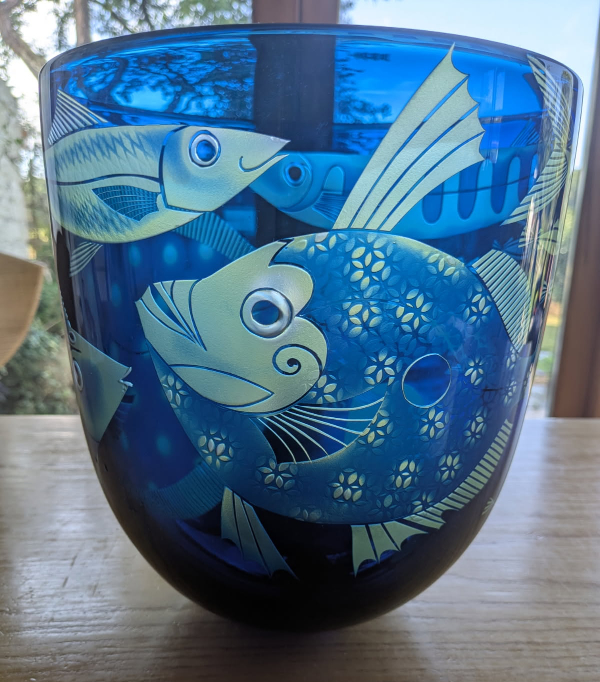 I enjoy teaching at home, at the Glass Hub, or at Bild-Werk Frauenau Summer School in Germany. Sandblasting is quite a simple technique to grasp so I like to help my students to fine-tune their design elements and to work in a methodical way. My visual reference is renewed by the different ways of seeing that my students bring to the courses, be they plumbers or PhD students.
I enjoy teaching at home, at the Glass Hub, or at Bild-Werk Frauenau Summer School in Germany. Sandblasting is quite a simple technique to grasp so I like to help my students to fine-tune their design elements and to work in a methodical way. My visual reference is renewed by the different ways of seeing that my students bring to the courses, be they plumbers or PhD students.
Years ago, I was lucky enough to be selected by Newell Brands and Sorrell as one of a small group of makers to supply individual, unique work for the former Queen’s present collection. This connection endorses the value and skill of my work, which reassures new buyers that my work is special.

Although I am my own fiercest critic, my favourite piece is usually the one that I’ve just finished. I’ll peel away the protective film, rinse the dust and allow daylight to bring its magic to my arrangement of colour and form that was conceived weeks before in front of a glowing glory hole.
My production rate is slow, which makes me far from prolific. I sell my work directly but also with Rachel Bebb Contemporary in Hampshire and Moorwood Art in Somerset. In addition, I sometimes show at Matthew Burt’s showroom in Salisbury, with my pieces placed for display on his exquisite furniture. I also undertake commissions and architectural projects. I really enjoy involving others in the creative process and realising their ideas.
 In conclusion, I’d like to mention the tutors’ ‘visitors book’ at Bild-Werk Frauenau, which is a reflection of the open-minded and sometimes chaotic intensity of the Summer School. No creative tutor is going to just write their name, which makes this book a kaleidoscope of uninhibited, arty joy. As someone who also trains horses, for my contribution I drew two horses, representing hot and cold glass, ‘cantering upsides’, with me balancing a foot on each. Often, in the glass world, these horses move apart from each other, but, under my weight, they can come together, willingly and naturally, to great effect.
In conclusion, I’d like to mention the tutors’ ‘visitors book’ at Bild-Werk Frauenau, which is a reflection of the open-minded and sometimes chaotic intensity of the Summer School. No creative tutor is going to just write their name, which makes this book a kaleidoscope of uninhibited, arty joy. As someone who also trains horses, for my contribution I drew two horses, representing hot and cold glass, ‘cantering upsides’, with me balancing a foot on each. Often, in the glass world, these horses move apart from each other, but, under my weight, they can come together, willingly and naturally, to great effect.
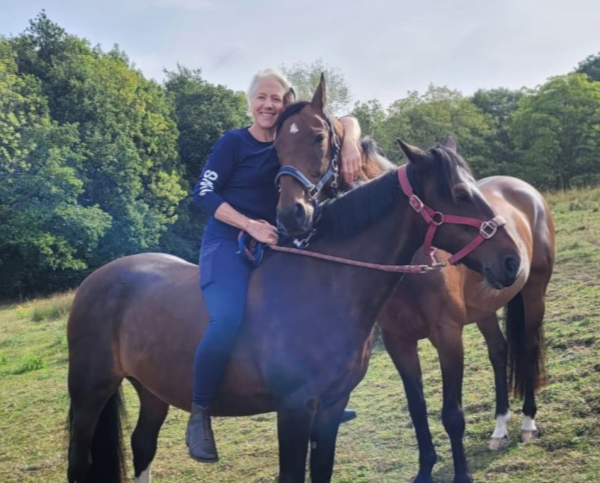
Find out more about Ruth Dresman via her website.
Main feature image of bowl: Photo taken by Mark Pickthall.
